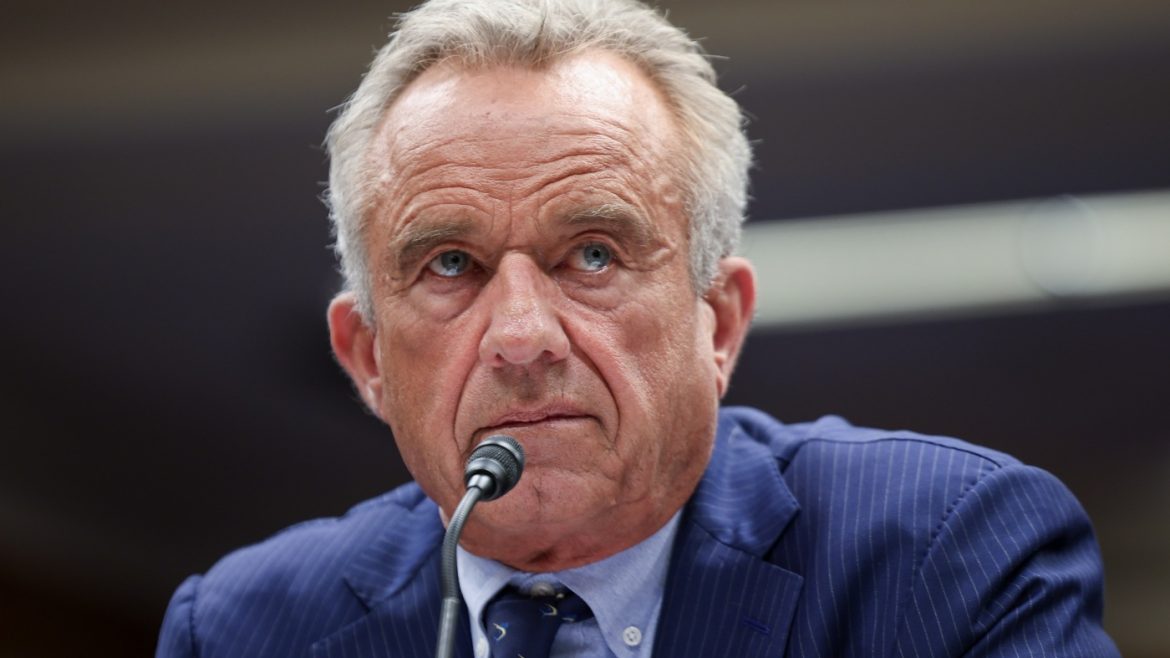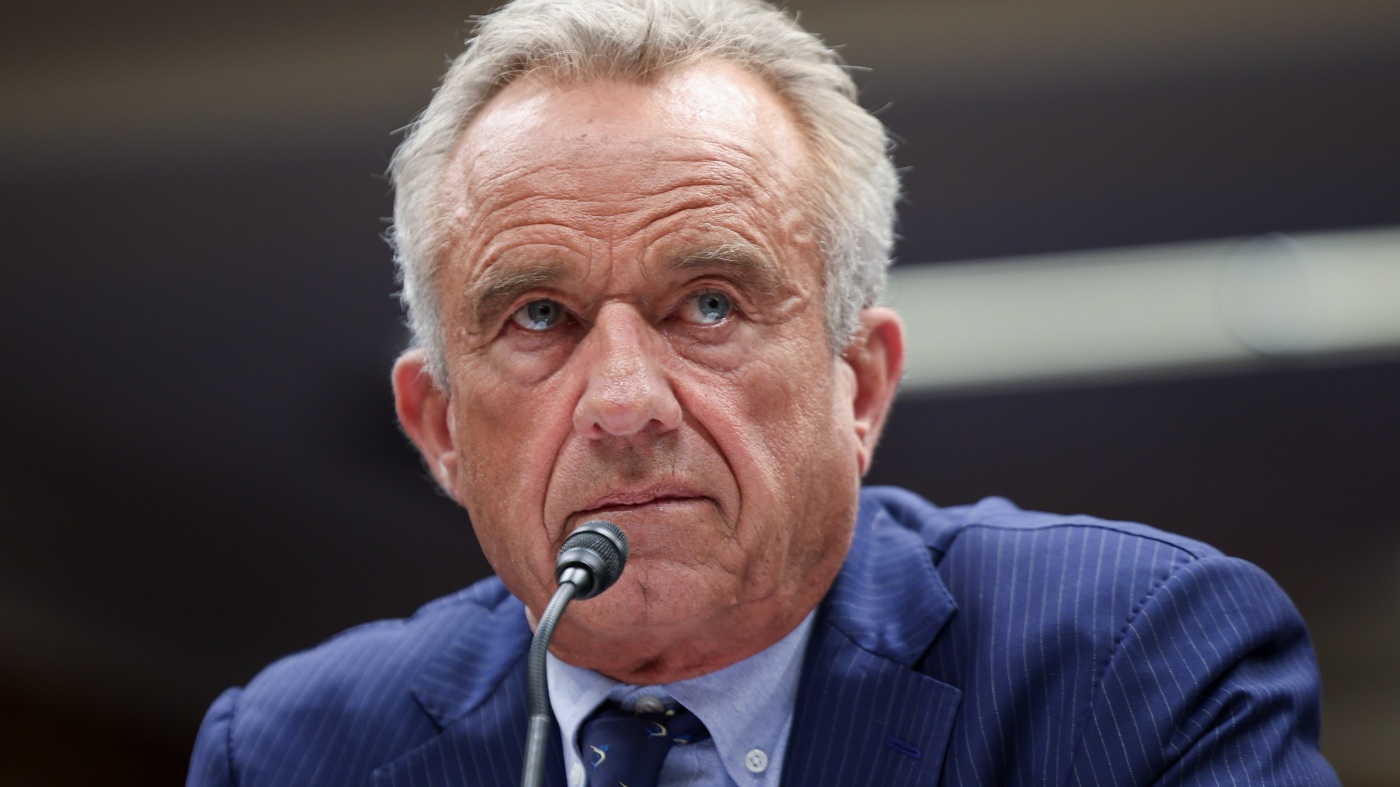Conflicting Narratives on RFK Jr.’s Cuts to Lead Poisoning Prevention Efforts: An In-Depth Analysis
The recent controversy surrounding Robert F. Kennedy Jr. (RFK Jr.), Secretary of Health and Human Services (HHS), has brought the nation’s lead poisoning prevention programs under intense scrutiny. Multiple reports indicate that RFK Jr. authorized broad cuts or layoffs affecting the Centers for Disease Control and Prevention’s (CDC) lead poisoning prevention team. Yet, RFK Jr. himself appears to contradict these accounts, claiming some programs and staff cuts are being reinstated or were made in error. This report synthesizes the available facts and explores the implications of this discord.
The Backbone of Childhood Lead Poisoning Prevention
Lead poisoning remains a significant public health concern in the United States, particularly affecting vulnerable children and marginalized communities such as Indigenous tribes and urban schoolchildren. Historically, the CDC’s Childhood Lead Poisoning Prevention Program (CLPPP) has played a crucial role in tracking lead exposure sources, investigating outbreaks, and educating communities.
The CLPPP’s specialized team of approximately 26 experts was responsible for these functions. Their expertise enabled cooperative efforts with tribal nations, local health departments, and school districts to identify and mitigate lead hazards.
What Happened to the CDC Lead Poisoning Team?
According to multiple news sources — including CBS News, Mother Jones, and E&E News by POLITICO — RFK Jr.’s tenure has seen drastic personnel changes within HHS affecting public health programs. Specifically:
– All 26 staff members of the CDC’s Childhood Lead Poisoning Prevention Branch were abruptly put on administrative leave or laid off.
– The team’s operations, including monitoring and interventions, came to a halt during this period.
– Federal grants and appropriations intended for prevention efforts were effectively stranded as the expert workforce vanished.
– These layoffs aligned with a broader wave of almost 10,000 job cuts across HHS.
– Localities facing lead crises, such as public schools in Milwaukee, reported a lack of federal assistance and expertise due to the absence of CDC personnel.
This cessation sparked bipartisan concern from senators and public health advocates. Senator Jack Reed explicitly confronted RFK Jr. about why the lead poisoning team was “effectively shut down” despite congressional appropriations.
RFK Jr.’s Conflicting Position and Assertions
At congressional hearings, RFK Jr. faced direct questioning about the existence and status of the lead poisoning prevention programs. His responses exhibited ambiguity:
– RFK Jr. denied plans to eliminate the CDC lead poisoning branch outright.
– He labelled childhood lead poisoning “an extremely significant concern.”
– He claimed that some programs that were cut are now being reinstated or restored.
– However, CDC officials, including the former director of the Childhood Lead Poisoning Prevention branch, unequivocally stated that work was fully stopped and staffing remained inactive.
– HHS spokespersons have offered vague reassurances about planning to continue lead prevention work within other offices but without confirming the restoration of the team or prior functions.
Analysts and insiders interpret RFK Jr.’s statements as “waffling,” reflecting a disconnect between public assertions and operational realities on the ground. The mismatch underscores an ongoing uncertainty about the true status of lead poisoning prevention efforts under the current administration.
Fallout and Consequences
The temporary—or potentially permanent—loss of a dedicated federal lead poisoning team has wide-ranging consequences:
Impacted Communities
– Urban school districts, such as Milwaukee Public Schools, facing lead contamination in water and building infrastructure, report “crisis” conditions without federal expert support.
– Tribal health agencies and local public health departments similarly report stalled support in lead hazard identification and mitigation.
– Children, particularly those most vulnerable due to socioeconomic factors, face increased risk of lead exposure-related health complications, including developmental delays and neurological damage.
Public Health Oversight
– The CDC’s diminished capacity to investigate, track, and respond to lead poisoning incidents compromises early warning and containment.
– Data collection and surveillance gaps impair national and regional understanding of lead exposure trends.
– Other environmental health programs under HHS have experienced similar reductions, potentially compounding public health vulnerabilities.
Political and Ethical Implications
– The controversy has political undertones, with scrutiny focused on the Trump-era appointee RFK Jr. continuing or expanding organizational changes affecting public health.
– Critics argue that these cuts are “indefensible,” particularly given the long-term societal costs of lead poisoning.
– The administration’s messaging contrasts with its actions, creating public distrust and confusion.
The Path Forward: Options and Recommendations
Despite the lack of current clarity over the full restoration of cut programs, several strategies can address the crisis:
Transparent Communication
– HHS and RFK Jr. should provide clear, detailed, and verifiable statements regarding staffing, program status, and timelines for reinstatement.
– Congressional oversight must hold hearings to monitor progress and prevent silent eliminations of critical public health teams.
Immediate Reinstatement and Funding
– Urgent rehiring or reactivation of CDC lead poisoning experts is necessary to resume vital interventions in crisis-impacted communities.
– Congressional appropriations dedicated to lead prevention must be fully utilized rather than left dormant.
Strengthening Local-Federal Collaboration
– Enhanced cooperation with states, localities, and tribal authorities is critical to bridge gaps caused by federal workforce disruptions.
– Capacity-building grants and technical support can empower local public health agencies in lead hazard detection and response.
Public Health Advocacy and Awareness
– Increased public awareness campaigns about lead poisoning risks can mobilize community vigilance and political pressure for program support.
– Environmental and health advocacy groups should continue calling on the administration to restore and prioritize these programs.
Conclusion: Unraveling the Contradictions Around RFK Jr.’s Lead Poisoning Cuts
The evidence paints a portrait of a public health approach hampered by administrative upheavals and conflicting narratives. While RFK Jr. expresses commitment to lead poisoning prevention, the elimination and slow reinstatement of specialized CDC teams have left vulnerable children and communities exposed to heightened risks.
This inconsistency between rhetoric and operational reality demands urgent resolution. The stakes extend beyond politics to the very health and futures of affected children nationwide. A transparent, data-driven, and restored federal commitment must supersede administrative confusion to effectively protect those at risk from the silent yet devastating threat of lead poisoning.
—
This situation serves as a stark reminder of how leadership decisions and bureaucratic actions intersect to shape public health outcomes. Only through clear accountability and revitalized resources can the promise of safeguarding children’s health from lead exposure be fulfilled in this critical moment.


